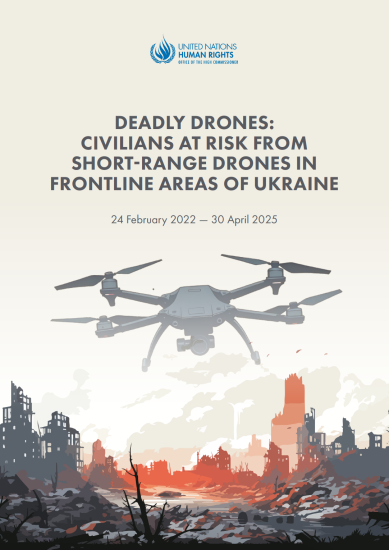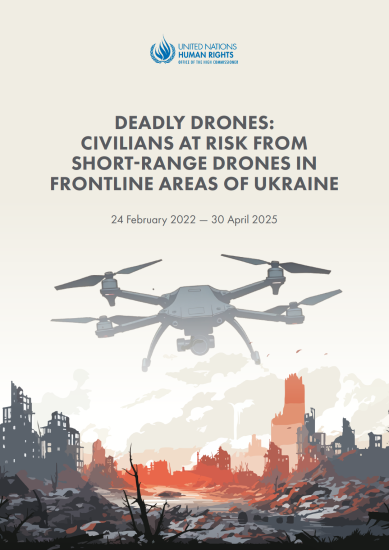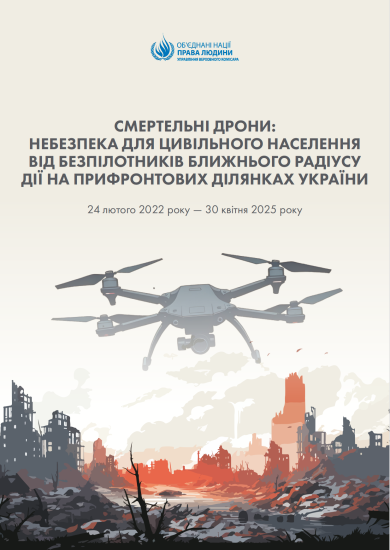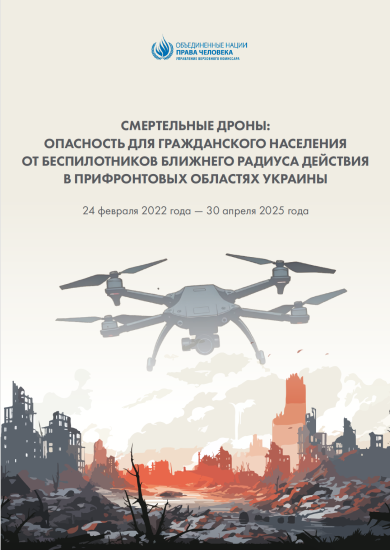Deadly drones: Civilians at risk from short-range drones in frontline areas of Ukraine, 24 February 2022 — 30 April 2025


👉 Click here for an illustrated webstory about the report's key findings
Summary
The military use of short-range drones in frontline areas of Ukraine has intensified over the past year, driven by technological advancements and increased production rates. While innovations, particularly in targeting capabilities, have enhanced operational precision, they have not increased civilian protection. Instead, these drones have emerged as a leading cause of civilian death and injury in Ukraine, and in some months, even surpassed more powerful weapons like missiles, artillery, and aerial bombs. The vast majority of the casualties occurred as a result of Russian attacks in territory controlled by the Government of Ukraine.
The drones used in most attacks causing civilian casualties are known as “First-Person-View” (FPV) drones. They are equipped with cameras that provide their operators with a real-time view of areas being traversed, allowing drone operators to select specific targets, including moving vehicles, and to attack them with exceptional accuracy. In principle, the enhanced visibility provided by FPV technology should support more accurate assessment and verification of the military or civilian character of a potential target. Nonetheless, operators have deployed these weapons against civilians who showed no signs of direct participation in hostilities. Documented casualties include civilians on bicycles, in private cars, on regular public buses, in ambulances, while delivering humanitarian aid or conducting evacuations, walking outdoors, and outside on their residential property.
The UN Human Rights Monitoring Mission in Ukraine (HRMMU) has documented and analyzed the circumstances of these attacks and assessed that targeting by drone operators has, in practice, violated core international humanitarian law (IHL) principles of distinction and precaution. Some incidents may amount to intentionally directing attacks against civilians, a war crime. In addition to causing death and injury, the attacks have exacerbated an already critical humanitarian situation. Government workers, healthcare personnel, staff of nongovernmental organizations (NGOs) providing assistance, and residents have been unable to safely pass through affected villages, meaning civilians could not access essential services, humanitarian aid, and medical care. This has affected a wide range of human rights, including the rights to life, food, and adequate standard of living, and healthcare, with older persons and those with disabilities disproportionately affected as they tend to remain in frontline areas.
Robust measures are needed to protect civilians in frontline areas. Deliberate targeting of civilians by short-range drones must cease. Violations of IHL should be investigated, and those responsible held to account.



